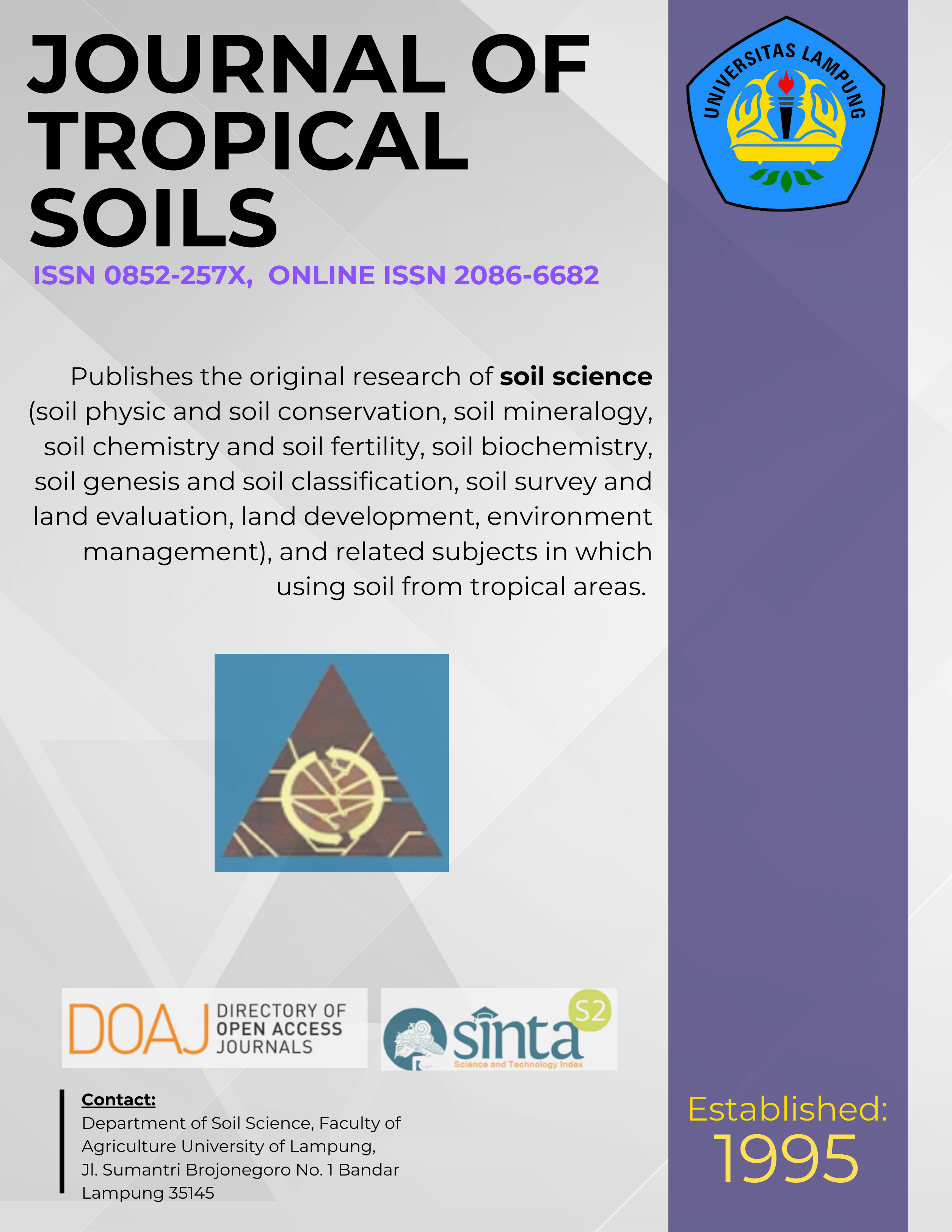The Diversity and Abundance of Springtail (Collembola) on Forests and Smallholder in Jambi
Main Article Content
Abstract
Harapan forests is the first restoration forest in Indonesia, includes several different ecosystems. Different ecosystems have different characteristic to affect the diversity and abundance of Collembola. In the ecosystem, Collembola have an important role in biocontrol, decomposition, soil nutrient distribution, stimulation of soil microbial activity and as an alternative feed for predators. This study was aimed to investigate the diversity and abundance of Collembola in four ecosystems at Harapan forest, i.e. secondary forest, rubber forest, rubber smallholder and oil palm smallholder. To achieve the objective, soil samples were taken at 48 observation points in the four ecosystem. The soil samples were then extracted by Kempson Extractor. The diversity and abundance of Collembola in four ecosystems were categorized as medium to high. The total of individual and population of Collembola in the secondary and rubber forest ecosystems were likely to be higher than in the rubber and oil palm smallholders. This study had also identified four orders, 14 families and 31 genera of Collembola, where Isotomiella and Proisotoma dominated the genus of Collembola in the four ecosystems.
[How to Cite: Widrializa, R Widyastuti, DA Santosa and G Djajakirana. 2015. The Diversity and Abundance of Springtail (Collembola) on Forests and Smallholder in Jambi. J Trop Soils 20: 173-180. Doi: 10.5400/jts.2015.20.3.173]
Â
Downloads
Article Details
Section
License for Authors
Authors who publish with this journal agree to the following terms:
- Authors retain copyright and grant the journal right of first publication with the work simultaneously licensed under a Creative Commons Attribution License that allows others to share the work with an acknowledgement of the work's authorship and initial publication in this journal.
- Authors are able to enter into separate, additional contractual arrangements for the non-exclusive distribution of the journal's published version of the work (e.g., post it to an institutional repository or publish it in a book), with an acknowledgement of its initial publication in this journal.
- Authors are permitted and encouraged to post their work online (e.g., in institutional repositories or on their website) prior to and during the submission process, as it can lead to productive exchanges, as well as earlier and greater citation of published work (See The Effect of Open Access).
License for Regular Users
Other regular users who want to cite, distribute, remix, tweak, and build upon author’s works, even for commercial purposes, should acknowledge the work’s authorship and initial publication in this journal, licensed under a Creative Commons Attribution License.

